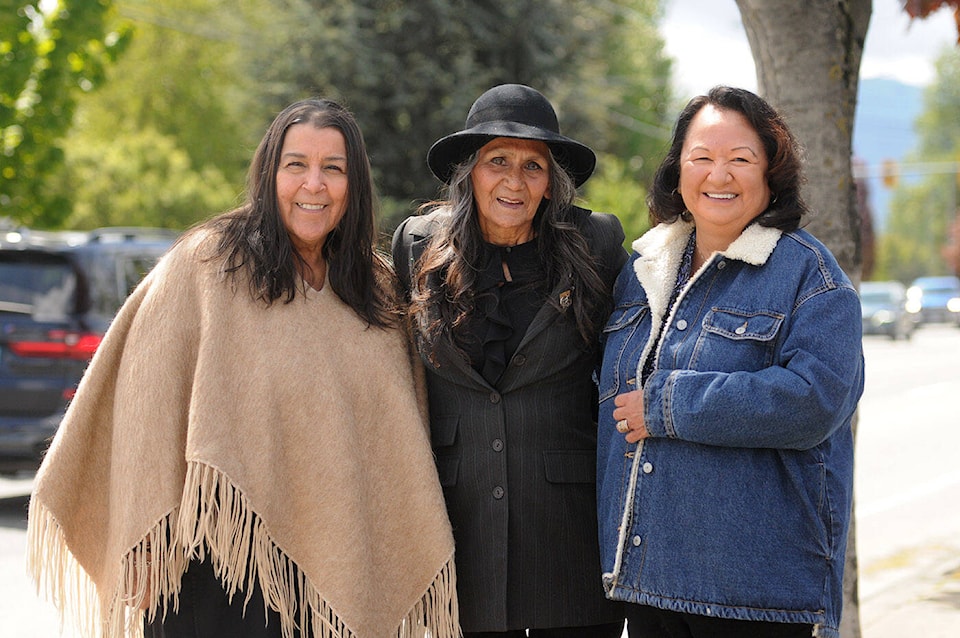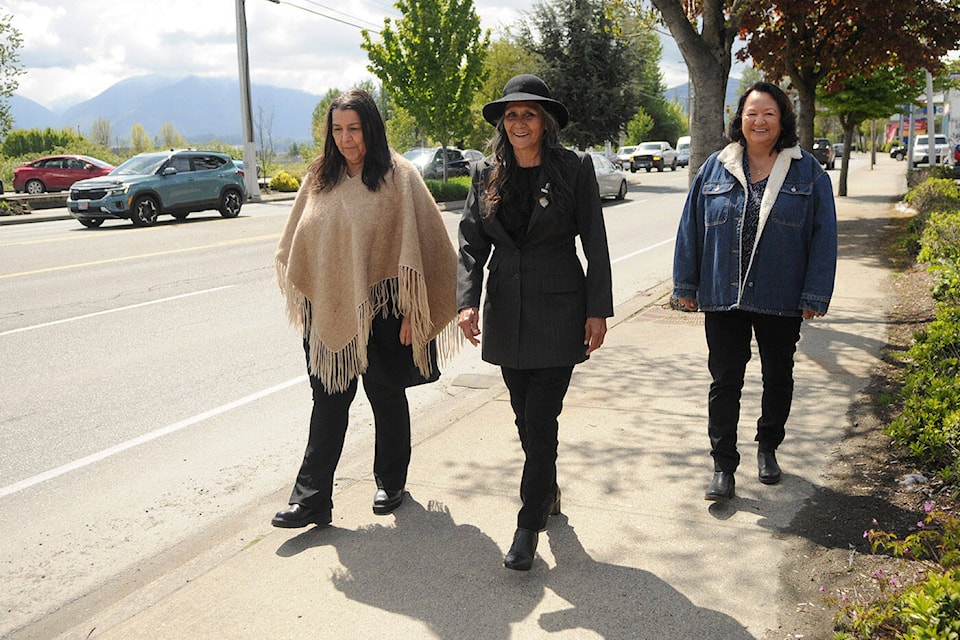Chilliwack was an overnight stop on the 1969 Moccasin Miles walk that saw hundreds of Stó:lō youth trekking from Vancouver to Hope.
Fast forward 55 years, and three of those walkers were enjoying lunch in Chilliwack this week, reminiscing about taking part in the historic walk.
Cheam First Nation member Denise Douglas was 14 years old when she completed the 98-mile fundraising walk called Moccasin Miles.
“I was honouring my father,” Douglas said, adding that Albert Douglas was Cheam Indian Band chief at the time, and also one of the organizers of the walk.
“It was organized by our leaders, but it was walked by the young people,” she said.
A photograph printed in April 30, 1969 Progress captures the moment as Debra Sparrow, Gwen Point, Denise Douglas, and Luwana Charles Williams were arriving in Chilliwack.
On that Saturday night many of walkers took an overnight break, joining about 300 locals at a huge salmon buffet with entertainment at Chilliwack Senior Secondary, as reported in the Chilliwack Progress of April 30, 1969. The featured attraction at the gathering was the rising star, Chief Dan George and dance troupe.
The individual stories of why each person walked in Moccasin Miles were different, but there was a feeling of great unity and camaraderie along the way.
“We were a beautiful, harmonious group,” Douglas remembered, adding they were mostly strangers to each other who all “came together as one” for the epic walk.

Moccasin Miles ended up raising about $40,000 for six Indigenous organizations, through sponsors and pledges collected by the walkers, which was a princely sum back in the day.
“We needed resources for our politicians to do the work they needed to do,” explained Douglas.
There was also mounting pressure at the time around unsettled land claims. They needed funds to organize leadership meetings of chiefs in Kamloops, and then with a plan of sending the chiefs to Ottawa. Those discussions led to the creation of the National Indian Brotherhood until the late 1970s, which evolved into the Assembly of First Nations, which is still a going concern.
“Plus they funded what would become the National Education Policy, which focused on Indian education, and I am not ashamed of using the term ‘Indian’ here because it is what it is, and that was the term. They were trying to preserve our culture so cultural education was a big part of that early effort.”
The walkathon was a response by leadership to the federal White Paper, a policy “which we interpreted as an extinguishment policy. It wasn’t well received.”
But the walk, and the organizations that sprang up as a result, also led to the eventual creation of the Coqualeetza Education Centre.
“My dad saw education as a fundamental goal,” Douglas said.
Part of the “ripple effect” from the walk, Douglas said, was adopting the use of direct action, or non-violent political action, Douglas noted.
“It started a legacy of marathons or walkathons, and it was something the leaders were passing to us.”
The walk was inherently peaceful, countering the image of the violence sometimes associated with the early American Indian Movement.
“In my mind, that’s the seed my dad planted. Sometimes it’s hard to be patient but public education still works. And in our days right now of reconciliation, we need softer ways.”
What was Douglas hoping for when she organized a lunch gathering in 2024, to reunite some of the walkers, and commemorate the historic walk?
“I was thinking about the heritage, the history of our past leaders and their initiatives, and sharing the legacies that were created,” Douglas replied.
“Also we’re still here, and we’re not dead yet. We’re still of sound mind and volition.”
